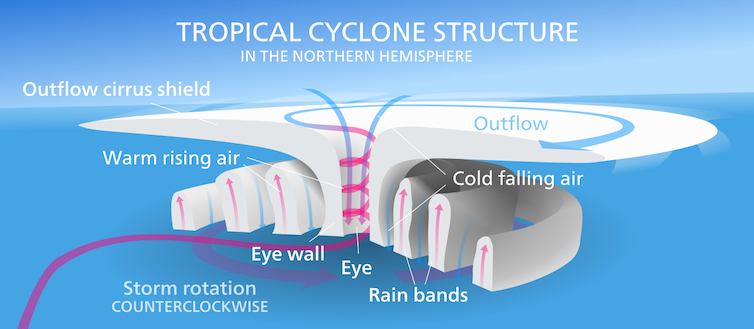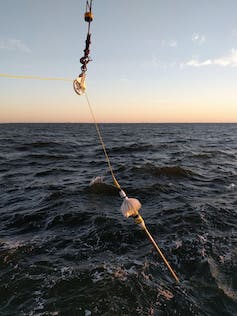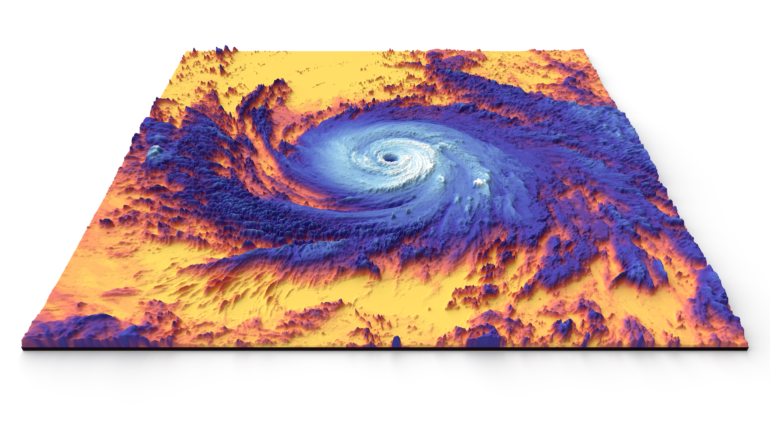When a hurricane hits land, the destruction can be visible for years or even decades. Less obvious, but also powerful, is the effect hurricanes have on the oceans.
In a new study, we show through real-time measurements that hurricanes don’t just churn water at the surface. They can also push heat deep into the ocean in ways that can lock it up for years and ultimately affect regions far from the storm.
Heat is the key component of this story. It has long been known that hurricanes gain their energy from warm sea surface temperatures. This heat helps moist air near the ocean surface rise like a hot air balloon and form clouds taller than Mount Everest. This is why hurricanes generally form in tropical regions.
What we discovered is that hurricanes ultimately help warm the ocean, too, by enhancing its ability to absorb and store heat. And that can have far-reaching consequences.

How hurricanes draw energy from the ocean’s heat.
Kelvin Ma via Wikimedia, CC BY
When hurricanes mix heat into the ocean, that heat doesn’t just resurface in the same place. We showed how underwater waves produced by the storm can push the heat roughly four times deeper than mixing alone, sending it to a depth where the heat is trapped far from the surface. From there, deep sea currents can transport it thousands of miles. A hurricane that travels across the western Pacific Ocean and hits the Philippines could end up supplying warm water that heats up the coast of Ecuador years later.
At sea, looking for typhoons
For two months in the fall of 2018, we lived aboard the research vessel Thomas G. Thompson to record how the Philippine Sea responded to changing weather patterns. As ocean scientists, we study turbulent mixing in the ocean and hurricanes and other tropical storms that generate this turbulence.
Skies were clear and winds were calm during the first half of our experiment. But in the second half, three major typhoons – as hurricanes are known in this part of the world – stirred up the ocean.

Microstructure profilers are used to measure ocean turbulence. This one is designed and built by the Ocean Mixing Group at Oregon State University.
Sally Warner
That shift allowed us to directly compare the ocean’s motions with and without the influence of the storms. In particular, we were interested in learning how turbulence below the ocean surface was helping transfer heat down into the deep ocean.
We measure ocean turbulence with an instrument called a microstructure profiler, which free-falls nearly 1,000 feet (300 meters) and uses a probe similar to a phonograph needle to measure turbulent motions of the water.
What happens when a hurricane comes through
Imagine the tropical ocean before a hurricane passes over it. At the surface is a layer of warm water, warmer than 80 degrees Fahrenheit (27 degrees Celsius), that is heated by the sun and extends roughly 160…



